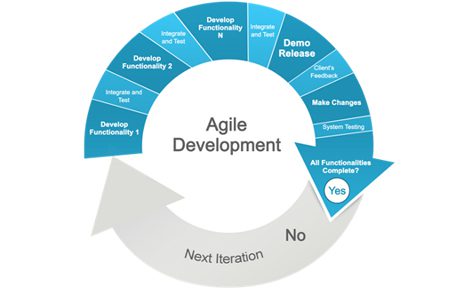
Nohabbo Educated: Agile Projectmanagement
Agile working is a project management method that focuses on delivering value to the customer through an iterative and incremental approach. The goal is to be able to quickly and flexibly respond to changes and thus achieve higher customer satisfaction. Agile teams work together on a product or service and use a number of specific techniques and tools to monitor progress.
An important part of Agile working is the product backlog. This is a list of all the features and properties that need to be added to the product to make it a success. The product backlog is a living document and is constantly updated and adjusted based on changing customer needs and priorities.
When the team is ready to start a new iteration, it selects the tasks from the product backlog that will be carried out in the next sprint. This is done by creating the sprint backlog. The sprint backlog contains the specific tasks that need to be completed to achieve the sprint goals. The team then works together to complete the tasks in the sprint backlog, often in daily stand-up meetings.
In addition to the product and sprint backlogs, Agile teams often use columns to categorize tasks. For example, 'to do', 'in progress', and 'done'. These columns are often displayed on a physical board or online platform and provide a visual way to track task progress and identify any bottlenecks.
Another important column in Agile working is 'blockers'. When a task cannot be completed because there are dependencies on other tasks, it can be moved to the 'blockers' column. The team can then work together to resolve the blocker and move the task back to the 'in progress' column.
Finally, Agile teams often use columns for tasks that cannot be completed within the current sprint. These tasks are moved to the 'backlog' column and re-evaluated and reprioritized later.
Overall, Agile working is a flexible and iterative way to carry out projects. By using the product backlog and sprint backlog, Agile teams can effectively plan their work and closely monitor their progress. The different columns provide a visual way to track task progress and enable the team to quickly and flexibly respond to changing customer needs.